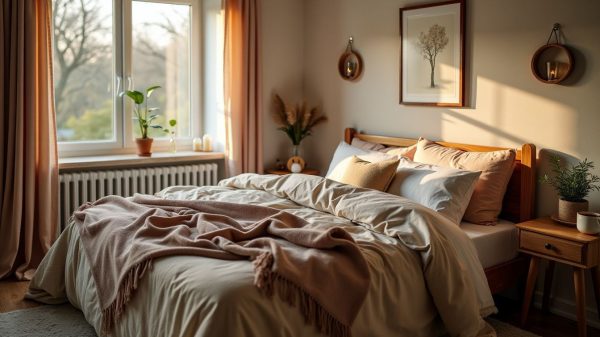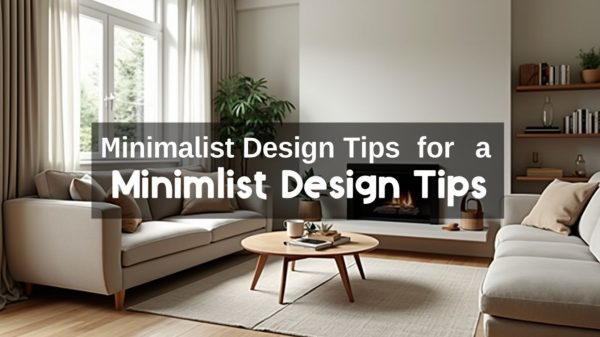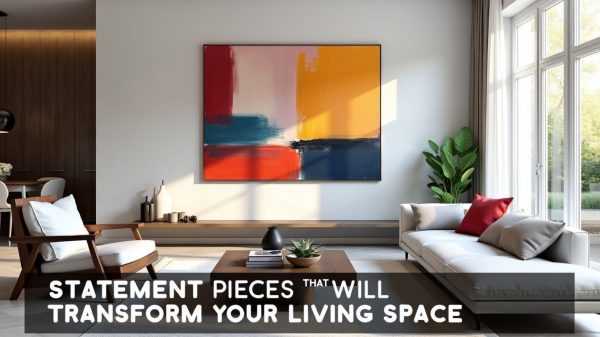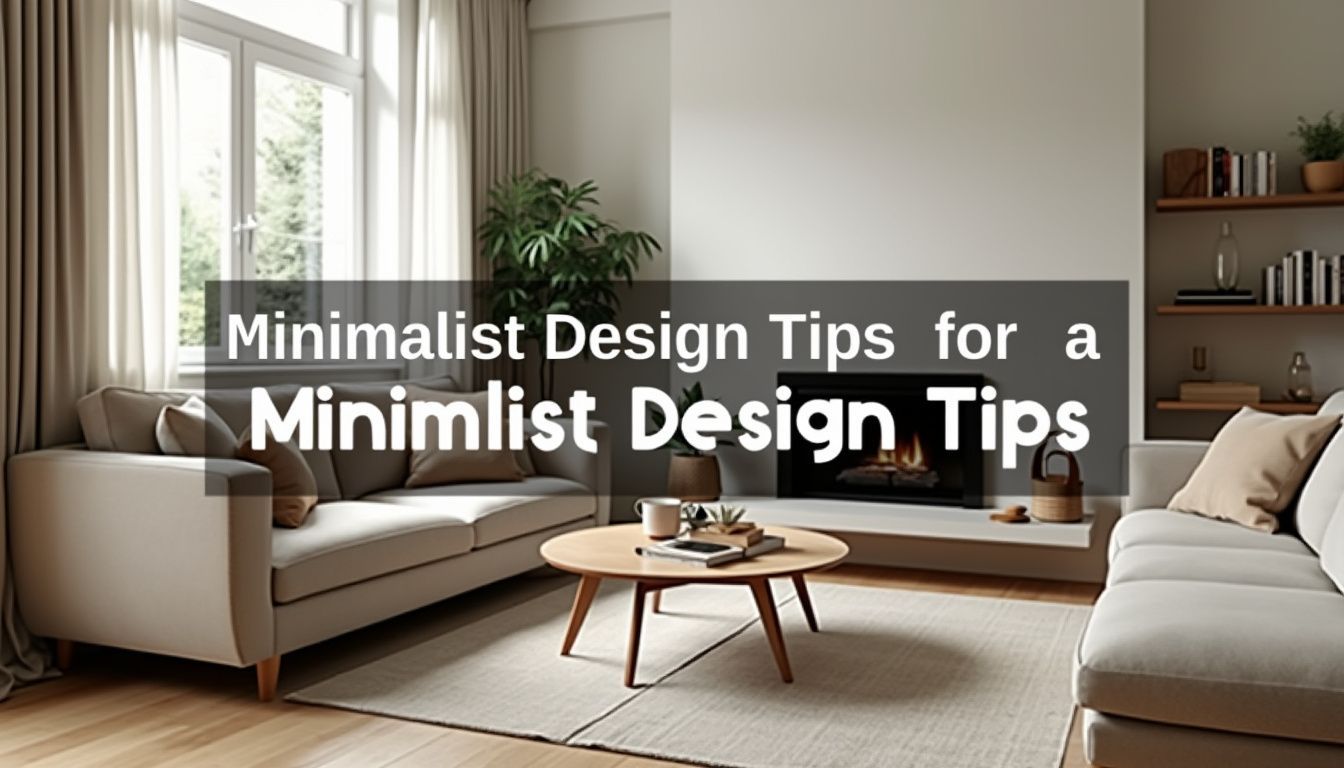Feeling overwhelmed by clutter at home? You’re not alone. This article shares minimalist design tips for a more organized, clutter-free space. Let’s simplify your life!
Embrace Simplicity in Design
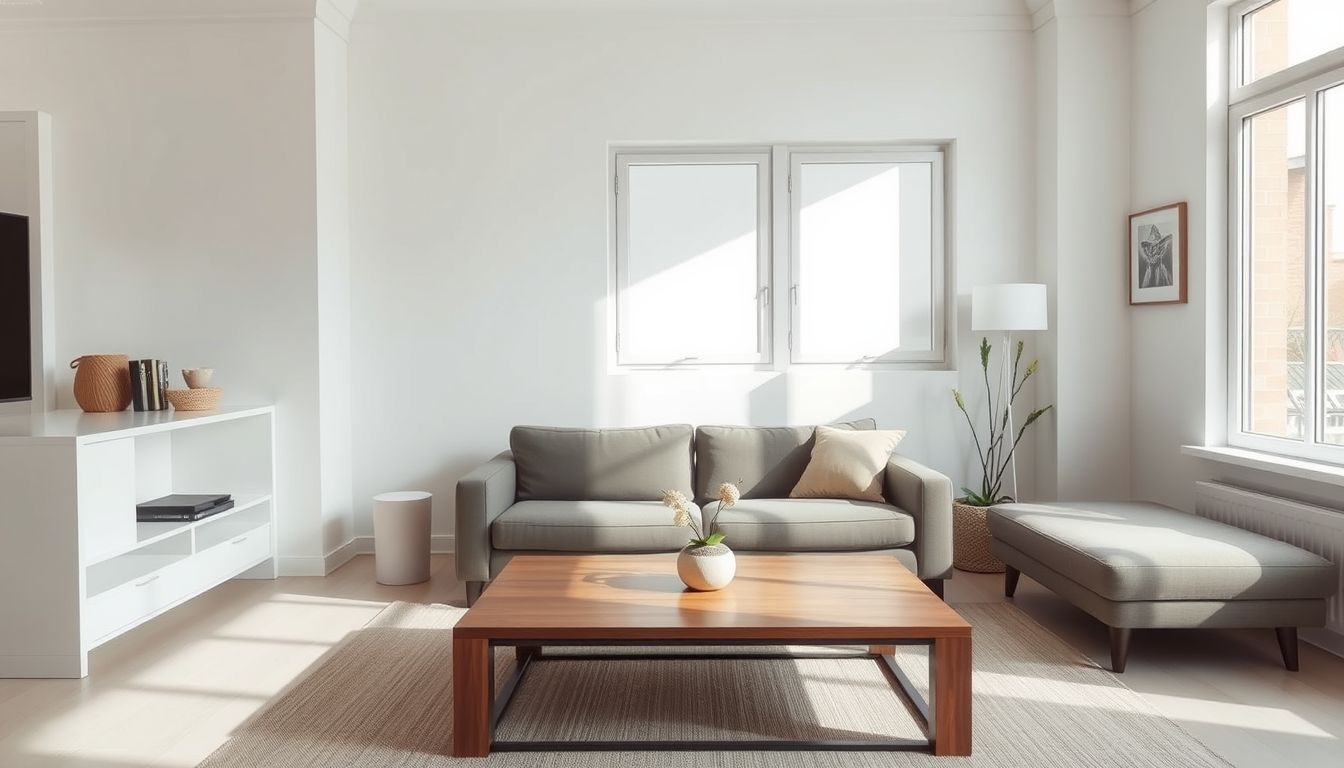
Choosing a simple design means making your life easier. Think of it as creating a calm oasis in your home. Go for furniture and items that serve a purpose or bring you joy, just like William Morris said, “Have nothing in your houses that you do not know to be useful or believe to be beautiful.” This approach helps cut down on clutter and keeps things straightforward.
Simplicity also makes spaces feel bigger and more inviting. With fewer distractions, each chosen piece can stand out more. This minimalist mindset supports an effortless lifestyle where less is indeed more.
Making the choice for simplicity isn’t about having bare rooms; it’s about focusing on what’s essential and finding gratitude in having less but meaningful possessions around you.
Opt for Neutral Color Palettes
Neutral color palettes make your home look clean and spacious. They bring a sense of calm and elegance. Choose shades like beige, gray, white, and black for walls and furniture. These colors match well with everything.
This way, you can easily mix different pieces without causing visual clutter.
Investing in high-quality furniture in neutral colors pays off. It lasts longer and stays stylish over the years. Add plants as decor to inject life into rooms without overwhelming the space.
This combination of neutral tones and natural greenery enhances the minimalist design while keeping your home chic and comfortable.
Prioritize Functional Furniture
Functional furniture transforms your home. Focus on pieces that serve multiple purposes. Multifunctional furniture saves space and adapts to your needs. Use organizational furniture to keep your space tidy.
Family-friendly furniture can withstand the chaos of kids. Childproof options protect little ones while enhancing style.
Think about your daily life. Prioritize items that help maintain a clutter-free living space. For example, a sofa bed offers seating and sleeping options. Adjustable home furnishings adapt to changing family dynamics.
Personalized storage solutions cater to your specific needs. This approach keeps your home organized and welcoming.
Limit Decorative Items
Clutter can overwhelm any space. Limiting decorative items helps create a clean, minimalist look. Focus on a few key pieces that resonate with you. Choose art or decor that sparks joy.
Avoid filling shelves with knick-knacks.
Set achievable decluttering goals. Make it a habit to sort through decorations regularly. Designate a specific area for donations. This streamlines your decluttering process and keeps your home clutter-free.
Simplifying your home decor makes your space feel more inviting and serene.
Use Storage Solutions Wisely
Use storage solutions wisely to create order in your home. Efficient storage makes a world of difference. Start by evaluating each room. Identify areas that need organization. Use containers, bins, and shelves.
These items help keep small belongings tidy and out of sight.
Think about spacesaving furniture. Ottomans with hidden storage or beds with drawers optimize space. Regularly assess your belongings to avoid clutter buildup. Stop bringing unnecessary items into your home.
This simple habit prevents new clutter from forming. A clear plan for storage leads to a more streamlined, minimalist environment.
Keep Surfaces Clear
Cluttered surfaces can create stress. Keeping surfaces clear helps you feel organized and calm. Designate specific spots for your everyday items. A neat table or counter can brighten your space.
Set a rule to clear surfaces daily. This habit builds a tidy environment and reduces distractions. Use trays or baskets to catch loose items. This simple strategy allows you to maintain order.
Living with less brings gratitude. Embrace your clean, clutter-free surfaces to enjoy your home more.
Integrate Natural Elements
Integrate natural elements into your home for a fresh look. Use high-quality furnishings that feature wood or stone. Incorporate greenery as decoration. Plants bring life to your space and improve air quality.
Choose plants that fit your style and are easy to care for.
Consistency in design matters. Create a flow by using natural materials in different rooms. This approach helps unify your home. These small changes can lead to positive lifestyle shifts.
Embrace nature and enhance your living environment.
Create Open Spaces
Open spaces breathe life into a home. They create a sense of freedom and comfort. Clear, unobstructed areas invite relaxation and conversation. Arrange furniture to encourage movement.
Keep pathways wide and accessible. This design choice promotes a calm atmosphere. William Morris said, “Have nothing in your houses that you do not know to be useful or believe to be beautiful.” Use this philosophy to guide your decisions.
Leave room for air and light. Spacious environments feel less crowded and more inviting. Create a home that nurtures both body and mind.
Establish Daily Tidying Habits
Establishing daily tidying habits helps manage clutter effectively. Clean the kitchen right after meals. Return items to their designated places promptly. Complete household projects as soon as you can.
An evening routine can set you up for success each night. Tidy up a little every day. This simple action can maintain orderliness and create a peaceful environment.
Display only items that bring you joy. Combine functionality with decor to maximize space. Systematize your approach. A clutter-free home starts with consistent habits. Stay committed to tidying each day.
Your efforts will pay off in a serene space.
Minimalist Design Tips for Specific Areas
Minimalist design can transform each room in your home. Find smart ways to simplify spaces like the living room and bedroom.
Living Room
A modern living room design tends to focus on simplicity and functionality. Choose simple and clean furniture pieces that serve multiple purposes. Seek multifunctional furniture to maximize your space.
Invest in quality items that will last. Display decor that brings you joy and complements your lifestyle.
Natural light makes a big difference. Maximize windows and use light-colored curtains. Bring in plants as decor to add life and warmth to the room. Keep surfaces clear to maintain a neat appearance.
Limit decorative items to only those that truly resonate with you. This approach will create a clutter-free and inviting living space.
Bedroom
A cluttered bedroom can weigh you down. Focus on embracing minimalist decor. Keep only what you need. Choose practical furniture that offers storage. A bed with drawers can save space.
Living with others adds a challenge. Children often collect items, leaving toys scattered everywhere. Adjust your expectations. Family living requires balance. Designate a spot for donations.
Regularly sort through belongings. Your bedroom should feel like a peaceful retreat, not a crowded zoo.
Kitchen
Keep your kitchen clean by developing good habits. Clean up after every meal. Return items to their designated places right away. Get into the routine of completing household projects promptly.
An evening cleanup can also work wonders.
Use efficient storage solutions to minimize clutter. Consider clear containers for easy visibility. Store only what you need. Create a designated donation drop-off spot for items you no longer use.
This will help maintain a tidy space and simplify your daily tasks.
Avoid Impulse Purchases
Impulse buying often leads to clutter. Resist the urge to make unplanned purchases. Each item you bring into your home adds to the mess. Before buying, ask yourself if you truly need it.
A lot of what we think we need isn’t essential. It’s easy to convince ourselves otherwise. Stopping unnecessary items at the door helps. This reevaluation of needs keeps your space clean.
Practice mindful spending to avoid unnecessary expenses. Think about what you already own. Regularly assess your belongings to know what you truly want. Shopping restraint builds consumer self-control.
Set a rule for yourself: wait 24 hours before you buy. This simple habit can curb impulsive choices. Designate a donation area for things you no longer need. This approach helps maintain a clutter-free environment.
Regularly Assess Your Belongings
Regularly evaluate your belongings. A minimalism approach aids in this process. Set aside time to go through your possessions. Search for items you no longer need. Think about using a donation box for outgrown clothes, read books, and unused kitchen items.
Create a habit of periodically reviewing your items. A consistent decluttering mindset keeps your space organized. Sort through your belongings frequently. This practice not only clears clutter but also revitalizes your home.
Make it an enjoyable activity with family or friends. You might even discover hidden treasures.
Designate a Donation Area
Create a specific area for donations in your home. This donation station should make decluttering easy. Keep a box or bag in this space for items you want to give away. As soon as you decide to part with something, toss it into the collection area.
This way, you streamline your process.
Establishing a giving corner helps you stay organized. It encourages regular decluttering. You’ll avoid clutter build-up and have a dedicated spot for charity items. Make this area visible and accessible.
It will motivate you to donate frequently.
Maintain Consistency in Decluttering
Maintaining consistency in decluttering is key to a tidy home. Focus on regular purging rather than overwhelming sessions. Set aside time each week to evaluate your belongings. This simple habit keeps clutter at bay and promotes ongoing simplification.
Ignore trends that come and go. Lasting value should guide your choices, not fleeting styles. Avoid bringing unnecessary items into your home. Reevaluate your needs before making new purchases.
A few simple steps can create consistent orderliness and enduring cleanliness in your living space.



